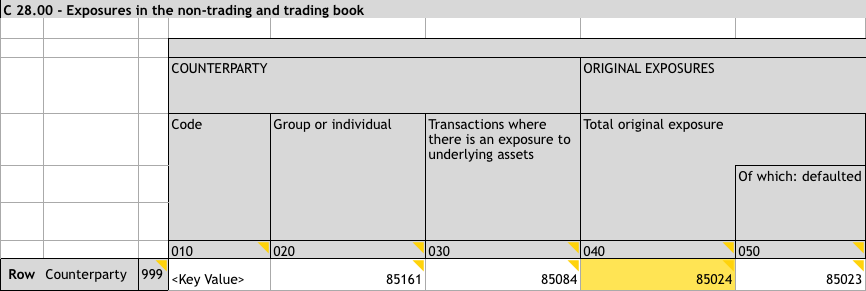A clean break: Banking supervisory authority requires new reporting formats
Europe’s banks have had to fundamentally reorganize their supervisory reporting systems in order to satisfy the Implementing Technical Standards (ITS) of the European Banking Authority (EBA). The usual file formats for electronic reporting have been replaced by the Data Point Model (DPM) and taxonomies in eXtensible Business Reporting Language (XBRL).
In XBRL, the information that needs to be reported to the financial supervisory authority is no longer filed in the usual template table cells with rows and columns. This makes it more difficult both to monitor individual reports and to compare reports with other sets of data.
Complex link: From XBRL to the usual entries on the form
It is possible to bridge the format gap between the XBRL file format as laid down by the banking supervisory authority and the FINREP and COREP forms used by reporting specialists. This is because precisely one data point in the Data Point Model is assigned to each COREP and FINREP table cell; only grayed-out cells are not assigned a data point. This is shown in the example below:

However, the data points cannot be directly read off in the XBRL report, where they are transcribed more as dimensional members. Thus, data point 85024 is defined as a four-dimensional member:
| Dimension | Domain | Member |
|---|---|---|
| ATY – Metric | AT – Metric | mi180 – Original exposure pre conversion factors |
| BAS – Base | BA – Base items | x9 – Exposures |
| MCY – Main category | MC – Main category | x59 – Debt instruments, Equity instruments, Derivatives, Off balance sheet instruments |
| INC – Individual clients | CC – Clients code | <Key value> |
The dimensional coordinates of each individual data point are filed under Fact and Context in the information reported in XBRL. This is because the information in FINREP and COREP reports that was shown as value in the cells and was described by means of row and column entries is recorded in the XBRL report as Fact as part of a Context. In XBRL, Facts cover the metric dimension member, a link to context and the information reported, while Context covers the reporting institutions, the reference date and the members of the remaining dimensions.
The following XBRL extract describes data point 85024:
<!-- XBRL fact: metric dimension, link to XBRL context and value to be reported -->
<eba:mi180 contextRef="c4" unitRef="U-EUR" decimals="-3">0</eba:mi180>
<!-- XBRL context: reporting institution, reference date and remaining dimensions -->
<xbrli:context id="c4">
<xbrli:entity>
<xbrli:identifier scheme="http://standards.iso.org/iso/17442:2012">LEIIDENTIFIERFORTEST</xbrli:identifier>
</xbrli:entity>
<xbrli:period>
<xbrli:instant>2013-12-31</xbrli:instant>
</xbrli:period>
<!-- XBRL scenario: covers remaining dimensions -->
<xbrli:scenario>
<xbrldi:explicitMember dimension="eba_dim:BAS">eba_BA:x9</xbrldi:explicitMember>
<xbrldi:typedMember dimension="eba_dim:INC">
<eba_typ:CC>c</eba_typ:CC>
</xbrldi:typedMember>
<xbrldi:explicitMember dimension="eba_dim:MCY">eba_MC:x59</xbrldi:explicitMember>
</xbrli:scenario>
</xbrli:context>Simply technology: Application makes the conversion
The bridge there and back between the statutory supervisory reporting in XBRL format and the usual view of the templates is therefore via the DPM data points and their dimensional definition:

To bridge the format gap between the reports required by the banking supervisory authority in XBRL file format and the forms that departments are used to, a specialty application for reading XBRL for COREP/FINREP is required.

